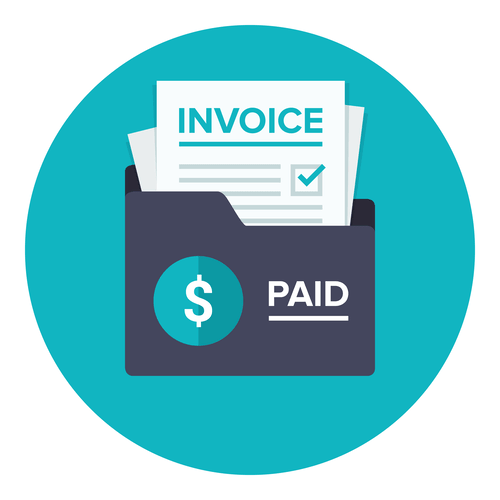A goodwill account appears in the accounting records only if goodwill has been purchased. A company cannot purchase goodwill by itself; it must buy an entire business or a part of a business to obtain the accompanying intangible asset, goodwill. Specific reasons for a company’s goodwill include a good reputation, customer loyalty, superior product design, unrecorded intangible assets (because they were developed internally), and superior human resources. Since these positive factors are not individually quantifiable, when grouped together they constitute goodwill.
- While intangible assets don’t have any direct impact on financial projections or closing entries, they do figure into your cash flow totals.
- They are recorded on the balance sheet as Property, Plant, and Equipment (PP&E).
- This means Computer Software is an integral part of the machine’s hardware.
- The sum of $40 million that was paid over and above $80 million (the value of the assets minus the liabilities) is the worth of goodwill and is recorded in the books as such.
- There are several ways to calculate the amortization of intangibles.
There is a presumption that the fair value (and therefore the cost) of an intangible asset acquired in a business combination can be measured reliably. Goodwill is perceived to have an indefinite life (as long as the company operates), while other intangible assets have a definite useful life. The possessions of value owned by companies can include tangible assets and intangible assets. While the first type of asset has physical properties, the second normally does not. Tangible fixed assets, such as plant and equipment, are also recorded on the balance sheet but as their useful life is reduced, that portion is expensed on the income statement as depreciation.
What are the Characteristics of Intangible Assets?
Further, you treat computer software as a part of the hardware costs if it is an operating system for hardware. In other words, you business must have the intent or the ability to generate, use, or sell the intangible asset. Furthermore, you should be able to showcase how such an asset will generate economic returns in the future for your business.

Accordingly, you need to amortize the cost less residual value of such assets systematically over their useful life. In accounting terms, an intangible asset is a non-physical resource with a financial value that has been acquired by a third party. A company can develop intangible assets internally which can be very valuable, but these won’t be recognized on the balance sheet. But intangible assets created by a company do not appear on the balance sheet and have no recorded book value. Because of this, when a company is purchased, often the purchase price is above the book value of assets on the balance sheet.
Types of Companies With Tangible Assets
For example, if you were considering buying a stock, you can compare its P/E ratio with other comparable stocks in the same industry to make a decision on whether you should buy it. Illiquid assets are assets that cannot be quickly or easily sold for cash. Businesses commonly use marketing, design techniques, and advertising to come up with their brands.
- Mary Girsch-Bock is the expert on accounting software and payroll software for The Ascent.
- Intangible assets can also include internet domain names, service contracts, computer software, blueprints, manuscripts, joint ventures, medical records, and permits.
- This greater value means that the company generates an above-average income on each dollar invested in the business.
- These assets are generally considered long-term whose value increases over time.
- These assets are generally recognized as part of an acquisition, where the acquirer is allowed to assign some portion of the purchase price to acquired intangible assets.
The IRS allows for a 15-year write-off period for the intangibles that have been purchased. There is a lot of overlap and contrast between the IRS and GAAP reporting. The Financial Accounting Standards Board (FASB) recently came up with a new alternative rule for the accounting of goodwill.
Examples of intangible assets
A brand is an identifying symbol, logo, or name that companies use to distinguish their products in the marketplace and from competitors. Brand equity is considered to be an intangible asset because the intangible assets do not include value of a brand is not a physical asset and is ultimately determined by consumers’ perceptions of the brand. A brand’s equity contributes to the overall valuation of a company’s assets as a whole.

Similar to fixed assets, intangible assets are initially recorded on the balance sheet as long-term assets. Accordingly, you need not recognize the internally generated intangible assets as intangible assets on your balance sheet. As per the Accounting Standard, you can only record the intangibles acquired in a Business Combination or purchased from outside as Intangible Assets on your Balance Sheet.
AccountingTools
This can occur as the result of an adverse event such as declining cash flows, increased competitive environment, or economic depression, among many others. Dividing the assets into these categories will help you identify the intangible assets easily. Let’s look at how we could proceed with identifying the intangible assets. Small businesses using cash-basis accounting or modified cash-basis accounting can use the statutory rates set by the Internal Revenue Service (IRS).
Customer loyalty, brand reputation, and other non-quantifiable assets count as goodwill. If you guessed that intangible assets are assets you can’t touch, you’re on the right track. “An intangible asset is [one] that is not physical in nature and does not include liquid or illiquid assets,” says Rajo-Miller. The 2022 GIFT report ranked Apple as the global company with the most valuable intangible assets, worth nearly $2.3 trillion.
